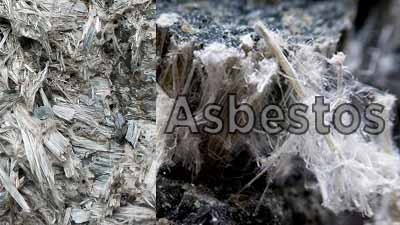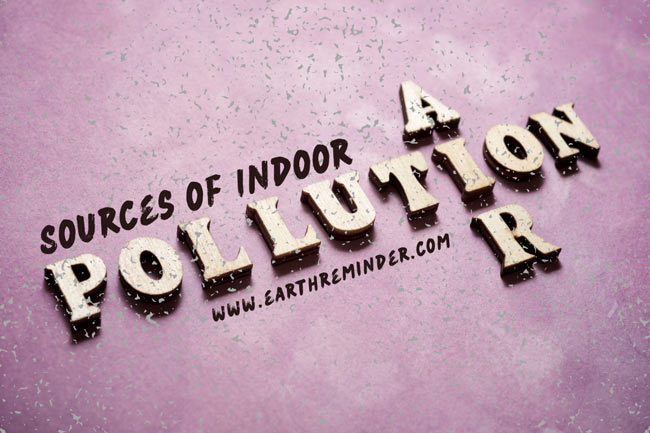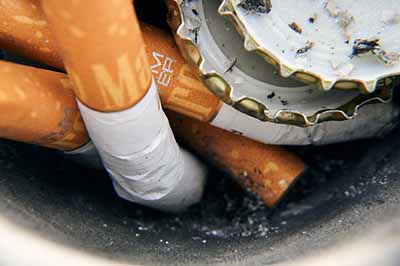What Are the Sources of Indoor Air Pollution?
Sources of Indoor Air Pollution:
Pollution not only refers to air, water or land pollution, but the contamination of indoor air in our homes or office is also a kind of pollution. Indoor air pollution is the primary mode of pollution we come in contact with primarily as we spend most of the time indoors, especially women and children.
This is why people have become more vulnerable to diseases these days due to weaker immune systems. Various household activities, materials, and products used indoors contribute to sources of indoor air pollution.
Table of Contents
- 1 What Are the Sources of Indoor Air Pollution?
- 1.1 Environmental Tobacco Smoking
- 1.2 Carbon Monoxide
- 1.3 Nitrogen Dioxide
- 1.4 Asbestos
- 1.5 Formaldehyde
- 1.6 Radon
- 1.7 Candles
- 1.8 Room Fresheners
- 1.9 Pesticides and other Cleaning Agents
- 1.10 Dusting Activities
- 1.11 Heaters, Wood-stoves, Gas stoves, etc.
- 1.12 Biological Factors
- 1.13 Organic Gases
- 1.14 Carpets
- 1.15 Paints
- 1.16 Furniture
- 1.17 Household Cleaning Products
- 1.18 Damaged CFL
What Are the Sources of Indoor Air Pollution?
Some of the indoor air pollutants and their sources are given below:
Environmental Tobacco Smoking
When we talk about the sources of indoor air pollution, the first thing that comes to mind is tobacco smoking. The chemicals released from tobacco smoking stay in the air for a long time and can be inhaled long after it has been released.
Environmental tobacco smoking (ETS) is equally harmful as the direct smoking of cigars and cigarettes. The harmful effects of smoking are well known by everyone, including lung cancer, heart problems, irritation in the eyes, nose & throat, asthma, etc.
As per a study published in Elsevier, pregnant women, when exposed to PM10 air pollutants from tobacco smoke, can result in the poor cognitive development of a child.
Carbon Monoxide
You cannot make out the presence of carbon monoxide in your home as it is colorless, tasteless and odorless. Various sources of indoor air pollution are caused by carbon monoxide, such as wood stoves, furnaces, environmental tobacco smoke, gas stoves & heaters, chimneys, etc.
Carbon monoxide may affect the blood circulation and nervous system of our body. The high concentration of carbon monoxide may cause dizziness, lack of coordination, nausea, headache, etc.
Further, according to a report by EPA, carbon monoxide in indoor air pollutants can cause different health issues at different concentrations. A high concentration of carbon monoxide causes problems like impaired vision and coordination, nausea, dizziness, and confusion. At low concentration, it causes chest pain in heart patients and fatigue.
According to an estimation by the World Health Organization (WHO), there are about 3.8 million deaths every year prematurely due to indoor air pollution.
Nitrogen Dioxide
Nitrogen oxide appears reddish-brown with a sharp smell. As far as the sources of nitrogen oxide emission are concerned, these are very much similar to carbon monoxide. Nitrogen dioxide may also cause health issues more or less similar to carbon monoxide, such as dizziness, nausea, headache, loss of concentration, etc.
The primary sources for the release of indoor nitrogen oxides include tobacco smoke, wood, gas, oil, kerosene, and coal burning appliances maintained poorly.
As per the index report, the concentration of nitrogen dioxide in the workplace and indoors is 27-36 microgram/m3 and 13-62 microgram/m3.
Further, as in some in vitro studies, nitrogen dioxide works against our immune system to prevent antioxidant activities. And the results are injury and inflammation. Also, it’s seen to deplete the uric acid, protein thiol groups, and ascorbic acid.
Asbestos
Asbestos is one of the major sources of indoor air pollution in developing countries. It is the main component of many home construction materials such as paints, floor tiles, ceilings, and other building materials.
Asbestos is a kind of magnesium silicate. Its fibers are pretty small and can be inhaled quite easily without any notification.

Further, asbestos causes scarring of the lungs, namely asbestosis. This deadly disease results in breathing problems followed by heart failure.
Formaldehyde
Formaldehyde is an organic compound that comes under the leading type of indoor air pollution. It stays in gaseous form at room temperature as it is invisible. Tobacco smoke, textiles (like durable press drapes), pressed wood (like hardwood, plywood, fiberboard, etc.), glues, etc., play a vital role as formaldehyde sources.
Higher concentrations of formaldehyde present at home can cause various health issues such as irritation in the eyes, nose, skin & throat, cough, fatigue, etc. In some cases, it may cause severe health issues like cancer.
Formaldehyde is also a result of indoor combustion processes like heating, cooking, incense, or candle burning. Cleaning products, including softeners, detergents, disinfectants, carpet cleaners, and shoe products, also include formaldehyde. Further, computers, photocopiers, and some other products are also sources of indoor formaldehyde.
Radon
Radon is present deep beneath your home in the bedrocks of the foundation. It is a colorless, tasteless & odorless gas. It is a highly radioactive gas; the worst part is that radon does not show any immediate symptoms. You will be inhaling it, completely unaware of this fact.
According to a study, the amount of radon present in homes is almost three times more active compared to its outdoor presence. Continuous inhalation of radon for a long time may lead to lung cancer (especially smokers are much more vulnerable to lung cancer-causing harmful effects of radon gas).
Candles
Candles may give an elegant look to your home decor but are also one of the sources of indoor air pollution. The harmful gases and leftover sediments may cause various harm to you. The burning of candles (paraffin, vegetable oil, beeswax or soy candle) releases a few soot carbon particles that may cause respiratory problems to you and your family members.
Based on a report by IQAir, candles emit fine suspended particles that are ultrafine and can result in health problems like allergies, asthma, and other respiratory diseases. Further, the volatile organic compounds released are also dangerous to inhale, which results in dizziness, headache, allergies, and asthma attacks.
Room Fresheners
Room fresheners are widely used in our homes, but you may not be aware of their impacts on our health. Prolonged exposure to air fresheners may lead to health problems.
The toxic chemicals inside room fresheners include benzene, toluene, m,p-xylene, formaldehydes, phthalates, etc.
Some room fresheners contain ethylene-based glycol ethers, which may cause neurological & blood effects to our body along with nausea, anemia, fatigue, etc. Some other room fresheners contain phthalates that are highly harmful to endocrine systems, especially for children. Further, these can be absorbed by walls and furniture and re-enter the indoor atmosphere.
Pesticides and other Cleaning Agents
The primary reason for using pesticides is to kill pests so that you can imagine their harmful effects. It releases various chemicals into the air. Inhaling these chemicals may cause profound health implications (like irritation in the eyes, nose, throat, etc.). Higher concentrations of these chemicals may also harm your nervous system & kidney.
Dusting Activities
Dusting activities are a pretty common source of indoor air pollution. While dusting, we release many micro-dust particles into indoor air. When these dust particles enter our body through inhaling, they may cause breathing problems.
Heaters, Wood-stoves, Gas stoves, etc.
Cooking activities in the kitchen release harmful gases like carbon monoxide, nitrogen dioxide, radon, etc. Long-time exposure to these gases may cause frequent headaches, continuous fatigue, irritation in the eyes & nose, rashes in the skin, respiratory problems, etc.
Biological Factors
Various biological factors could cause indoor air pollution, such as molds, bugs, insects, mildews, etc. These biological factors can cause asthma, fevers, lung problems, skin irritation, etc. It is quite challenging to get rid of these biological factors completely. However, if you can minimize the moisture level in your home, you can somehow manage the mould problem.
You should maintain cleanliness to handle the problem of bugs & insects. You can also try pest control to tackle the problem of bugs & insects.
Organic Gases
Organic gases, also known as VOC (Volatile Organic Gases), contribute to sources of indoor air pollution. Many sources in our home are responsible for VOC emissions, some of which are pesticides, printers, permanent markers, building materials, paints, glue, cleaning supplies, photocopies, etc.
The lower concentration of VOC may irritate the skin, nose, and eyes, cause dizziness, nausea, etc. Some VOCs are even more toxic to our bodies and may cause severe health issues like cancer.
Carpets
Carpets are commonly used home furnishing products in everyone’s home. It is an easily available place for dust. In moist conditions, it invites various bacteria and fungi to grow in it. When you come in contact with these bacteria and fungus, it may cause headaches, nausea, fever, etc.
Paints
Paints give beautiful finishing to your rooms, but these paints also include some health risks. There are specific paints available that release VOCs while drying, especially enamels. People (especially kids) coming in contact with these VOCs may have a feeling of headache, nausea, fatigue, etc.
Furniture
The adhesives used in furniture making sometimes contain formaldehyde like a carcinogen. This formaldehyde does not have any immediate reaction, but it may release formaldehyde fumes over time passes. It may cause allergic reactions in people staying at home or office.
Household Cleaning Products
We primarily use different cleaning products to maintain the cleanliness of our home. Most cleaning products contain toxic chemicals like alcohol, ammonia, chlorine, etc. These cleaning products may irritate your skin, cause headaches, respiratory problems, etc.
Damaged CFL
Compact Fluorescent Lights, commonly known as CFLs, are widely used in homes, offices, apartments, etc. Using CFL is an ideal way to save energy. Still, if it breaks, it accidentally releases mercury. Mercury emission may lead to some health issues.
Conclusion:
The health effects of poor air quality can lead to various health issues, especially for kids. We should use an air purifier, keep and maintain our garden and grow more plants to get fresh air as plants can help fight the sources of indoor air pollution.


